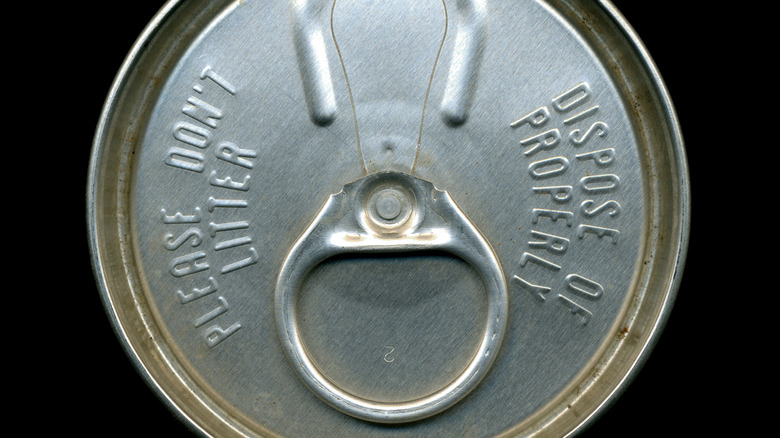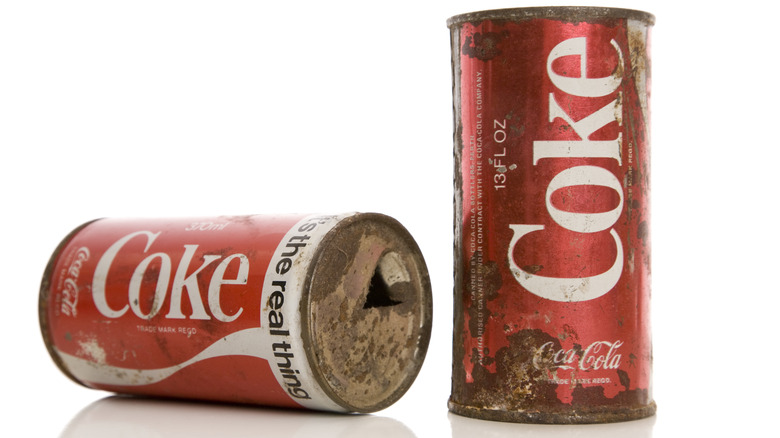Soda Cans Used To Look Completely Different
When Massachusetts soft drink manufacturer Clicquot Club first hit the market with canned soda, the design looked entirely different than soda cans today. It was in 1938, and although beer had already been distributed in cone-shaped cans with crown bottle top seals, Clicquot Club was one of the first to utilize the design for soda. Their initial run was of 100,000 cases of their best-seller, ginger ale.
Other soda brands began jumping on the cone-top can packaging. You can find vintage cone-top cans of big players at the time, like Pepsi, as well as little-known and since-discontinued soft drink brands, like Lucky Strike Root Beer. Coca-Cola stalled at the prototype phase of developing a signature cone-top can for any major roll-out.
Consumer response to soda in cans was lukewarm at best, despite efforts by manufacturers to redesign the cans with interior liners. The liners would be waxy or plastic to keep the acidic, carbonated soda from having a chemical reaction with the metal. However, the cans still left a metallic aftertaste in the soda. It took nearly two decades for the industry to create special linings that were acid-resistant, which coincided with a major innovation in can development — the pull tab. Ermal (Ernie) Fraze's invention of the pull tab revolutionized the beverage industry. By then, the market was more than ready to embrace soda in cans.
The market was ready for canned soda – once manufacturers fixed the metallic taste
As can designs bounced from cone-top to flat top with holes that needed to be punched in, to the now famous pull tab that evolved to include a ring, soda brands scrambled to take advantage of distribution in cans. Bottles were fragile and harder to mass market overseas, yet brands were wary of disgruntling their base consumers. In 1960, Coca-Cola released its first widely distributed can with a distinct design — a sketch outline of its famous Coca-Cola bottle — so consumers would know with certainty what they'd find inside the can.
Around that time, beverage distributors were switching to aluminum cans as their preferred choice over tin-plated steel cans. The transition stuck in 1967 when both Coca-Cola and Pepsi officially swapped their current cans for aluminum. The pull tab continued to be the design choice for both sodas and beer for decades, which solved the need for a can opener, but created a subsequent calamitous outbreak of pop-top tabs littered on beaches and parking lots everywhere.
Thanks to a Reynolds Metals engineer, the stay-on-tab, or Sta-Tab as it was called when it launched in 1975, became the lifting lever that pops open soda cans that we see today. Meanwhile, those vintage cans are now sold for a pretty penny if the conditions are right.

